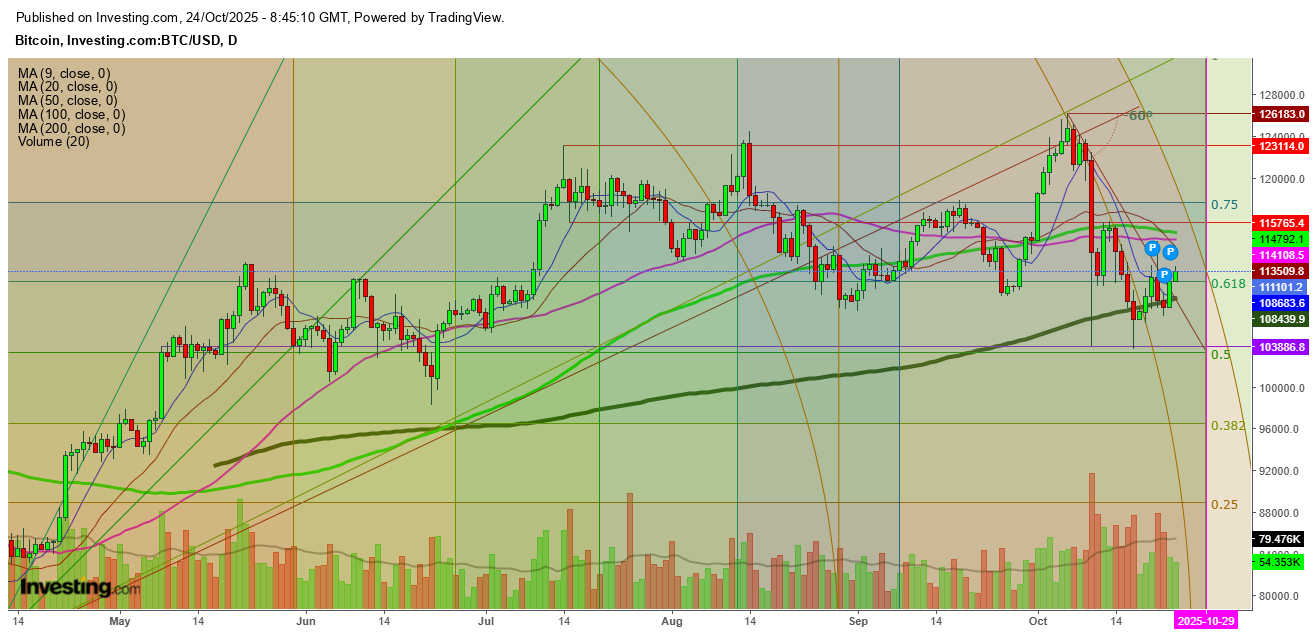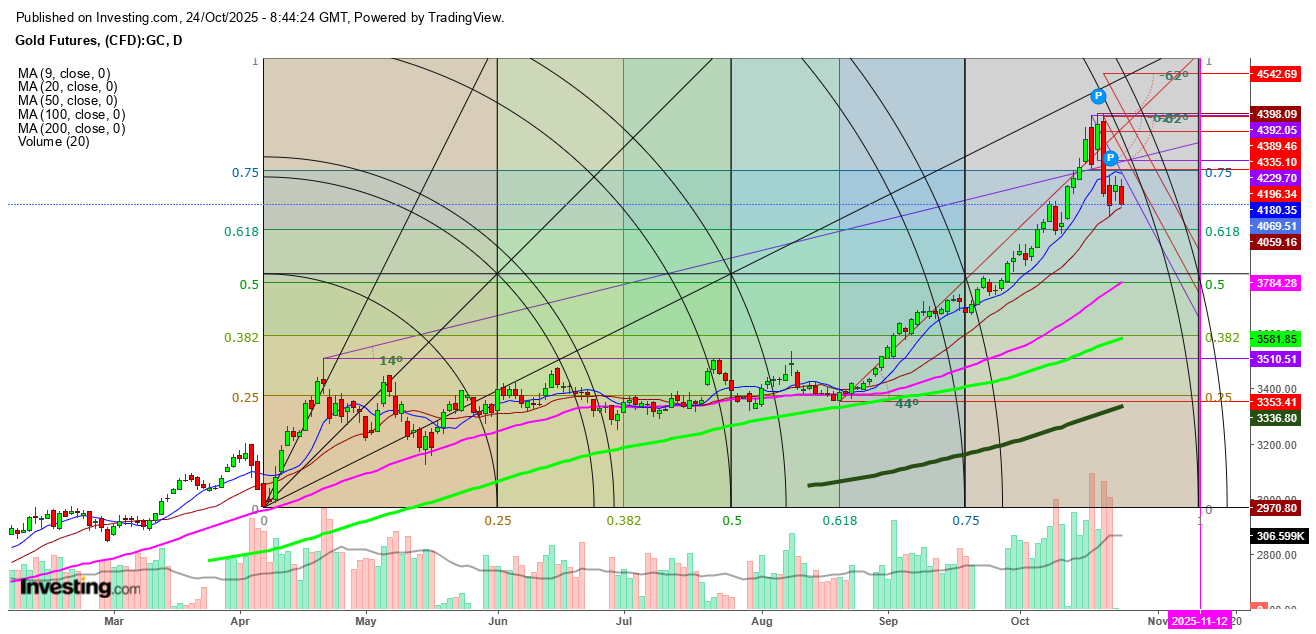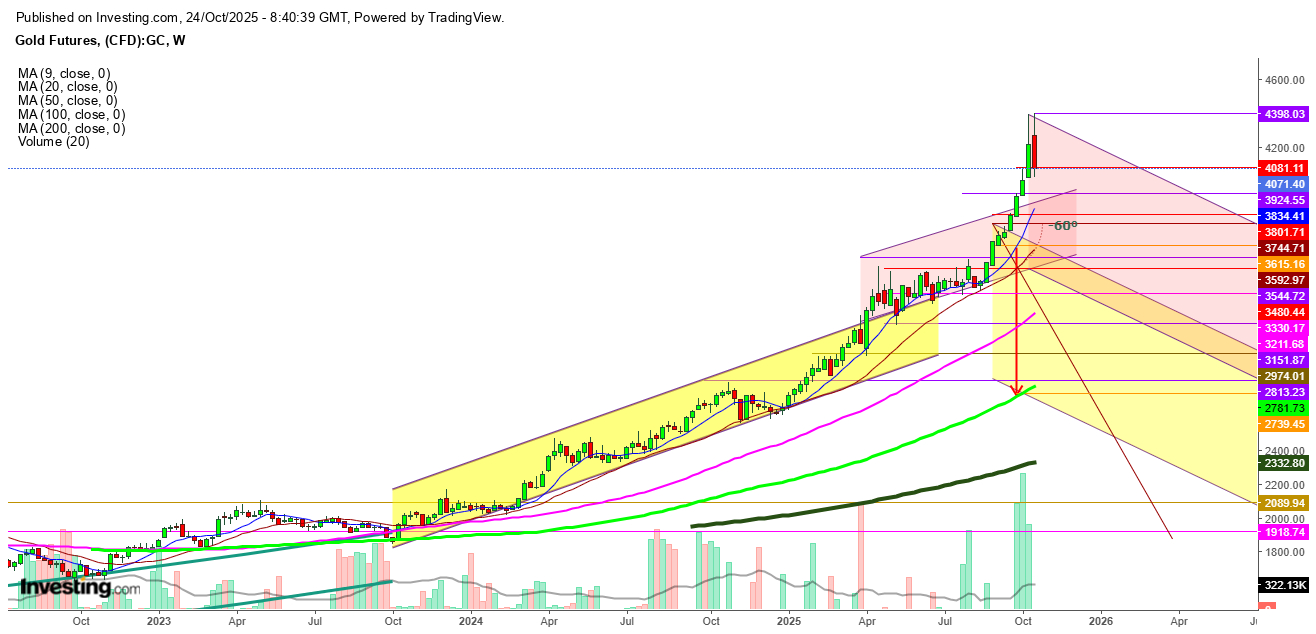5 big analyst AI moves: Apple lifted to Buy, AI chip bets reassessed
Gold has always been a haven for investors—but what happens when even the most reliable asset starts to tumble? This week, gold futures have taken center stage in a dramatic market shake-up, with every bounce now eyed as a potential selling opportunity. As money flows shift and volatility spikes, the gold market is telling a story of risk, strategy, and rapid change. Let’s dive into what’s driving this wild ride—and what it might mean for traders ahead.
After reviewing the movements of the gold futures on different time charts, I anticipate that the gold futures have been facing intense selling pressure since the steep fall on Tuesday, when the futures slumped approximately 6.80% from the record peak, which was tested on Monday at $4397.65.
Since then, the gold futures have tested this week’s low at $4021.91 on Wednesday, a fall of 8.63% this week amid easing central banks’ buying due to shifting money flow from gold to other risky assets like cryptocurrencies.

But, I find that Bitcoin is only the first usual stop after a massive gold price rally and subsequent sell-off. This seems to be playing out so far, as Bitcoin’s dominance is weakening since Bitcoin witnessed a steep fall on October 10 of approximately 15%, and the waves of this jolt were evidently a signal for the gold traders who were also at the peak, to follow this decline path, caused by a sell-off, probably by China.
However, some experts attribute this historic crash primarily to profit-booking after Gold’s recent rally. And because of this crash, $1.7 trillion was wiped out from Gold’s market capitalization in a single day.
On Thursday, Goldman Sachs said it remains structurally bullish on gold despite a recent price pullback, citing continued central bank demand and growing investor interest in the metal as a strategic portfolio hedge. The bank further stated that the correction “likely contributed to the selloff,” but added, “We believe sticky, structural buying will continue further, and still see upside risk to our $4,900 end-2026 forecast.”
Finally, I conclude that the gold was set to fall more than 5% this week after having rallied for nine straight weeks, driven by expectations of monetary easing and safe-haven demand amid geopolitical tensions. The pullback reflected profit-taking after bullion hit all-time highs, as well as a shift in sentiment following signs of easing U.S.-China tensions.
Technical Levels to Watch

On the daily chart, gold futures rebounded on Wednesday after touching strong support at the 20-day moving average (DMA) of $4021.91. Despite this bounce, gold faces immediate resistance at the 9 DMA of $4182.50. As of Friday, support from the 20 DMA stands at $4060.
Based on the charts, if gold futures drop below the key support at the 20 DMA, the next potential support level is at the 50 DMA ($3784). If this level also fails to hold, gold may continue its downtrend, possibly testing support at the 100 DMA ($3581.84) and then the 200 DMA ($3336) next week.

In a weekly chart, if the gold futures cannot hold the immediate support at $4014 this week, the next support will be at the 9 DMA at $3834.77, where a breakdown could push the futures to test the next support at the 20 DMA at $3593.
Disclaimer: Readers are advised to take any position in gold at their own risk, as this analysis is based only on observations.
